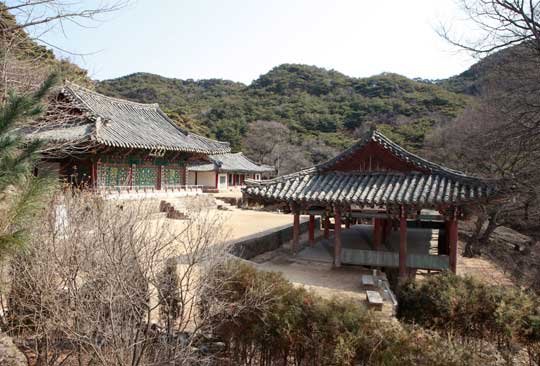Simwon Temple in Pakchon and its Luxurious Painting
On February 10, Juche 92 (2003), Chairman
At Pogwang Hall, the main building of the temple, he looked around the interior and exterior carefully.
The hall housed the relics such as a wooden bell with a clapper, a candlestick and the palanquin that was allegedly used to carry Shakyamuni to the temple, as well as the statues like Buddhist triad, gate guards and Arhats.
Listening to the explanation of a site manager, the Chairman looked up to the ceiling and suddenly stopped his eyes on soranbanja which had been painted in kumdanchong (gorgeous painting on the wooden elements of palaces and big temples).
Soranbanja refers to the coffered ceiling made of square boards decorated with various patterns in red and blue and gilt flowers in the middle.
The gilt decoration was wonderful indeed.
The Chairman asked him if the gilt painting could have been in reality when the Simwon Temple had been built in 9th century.
The manager answered that it had been built in the early 9th century but its gilt decoration had been undertaken during the extensive repair in 14th century, thus being a genuine painting without any intervention for 700 years.
Actually, he should have explained that its construction year was different from the year of gilt painting beforehand.
Nobody who had visited the Simwon Temple has questioned the year of gilt painting comparing the construction year of the temple with the history of nonferrous metalwork in our country.
Indeed, the Chairman’s brilliant wisdom and profound knowledge on the history were amazing.
Mentioning that it was really wonderful and our ancestors were very talented, with his hands on the waist, he gave clear instructions to value the excellent national cultural heritage and to protect them in their original state.
